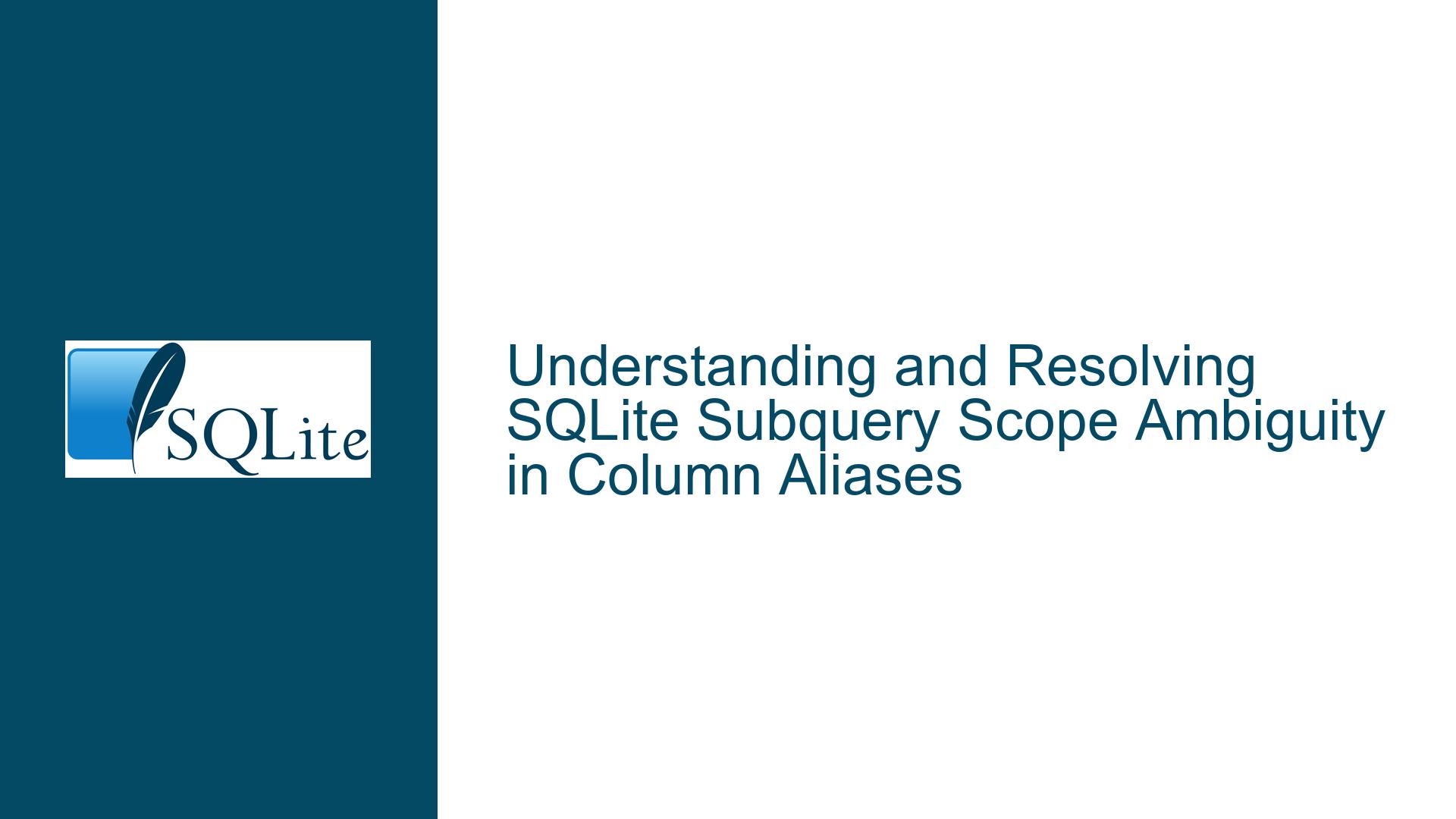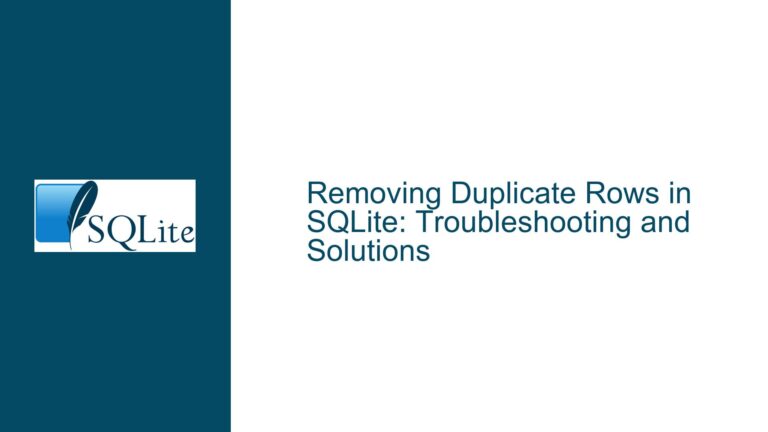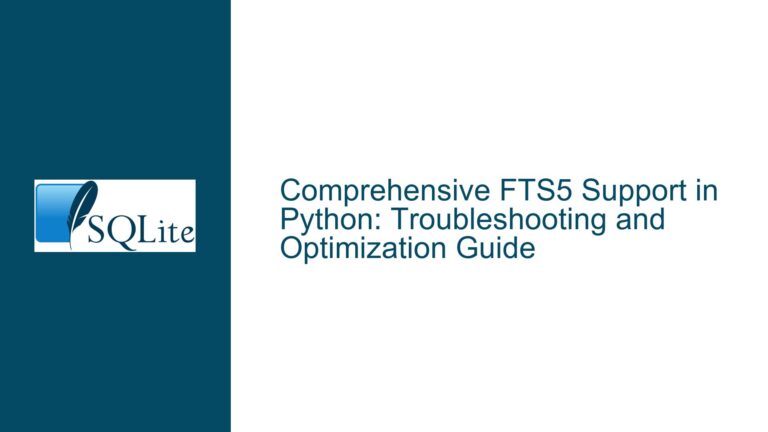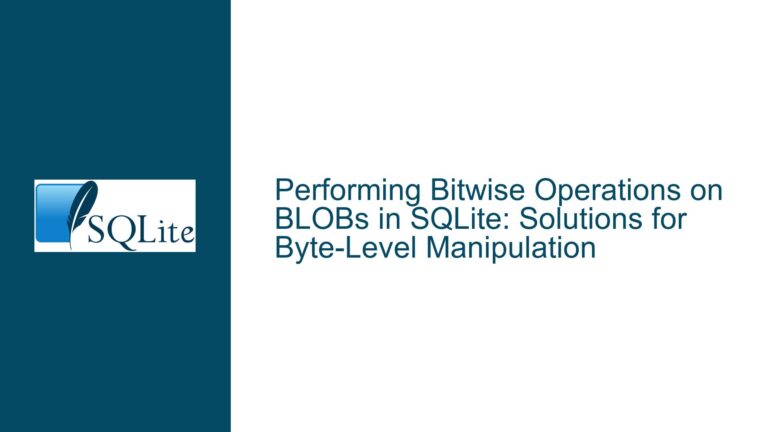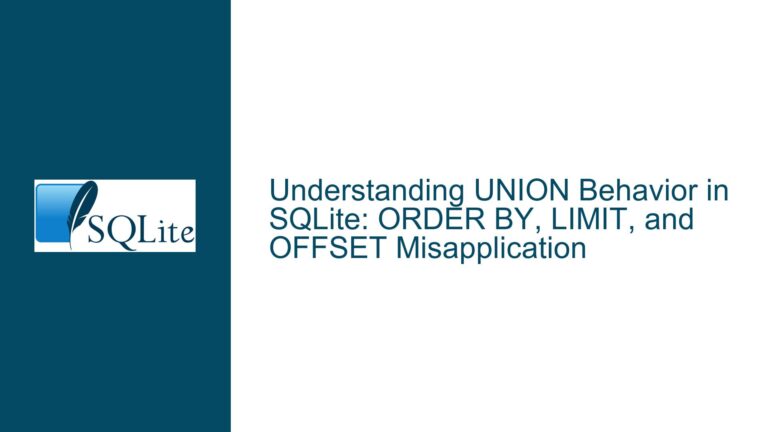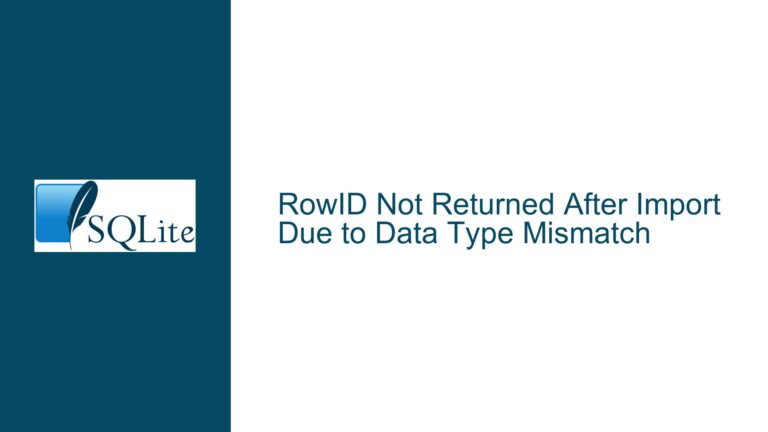and Resolving SQLite Subquery Scope Ambiguity in Column Aliases
Issue Overview: Unqualified Column References in Subqueries Leading to Scope Ambiguity
In SQLite, subqueries are a powerful tool for constructing complex queries, allowing you to nest one query within another. However, when dealing with subqueries, especially those embedded within the column list of a SELECT statement, the scope of column references can become ambiguous. This ambiguity arises when a column name is referenced without qualification (i.e., without a table or alias prefix) in a subquery, and the same column name exists in both the outer and inner query scopes. SQLite resolves such unqualified references to the innermost scope by default, which may not always align with the developer’s intent.
The core issue in the provided discussion revolves around the behavior of unqualified column references in subqueries. Specifically, the developer expected an unqualified image_id reference in a subquery to resolve to the outer query’s scope, but SQLite resolved it to the inner scope instead. This led to unintended query results, where the subquery incorrectly correlated rows due to the misinterpretation of the column reference.
The problem is illustrated with two examples: one where the column references are explicitly qualified with aliases, leading to the correct results, and another where unqualified references cause the subquery to misinterpret the scope, resulting in incorrect output. The developer’s expectation was that unqualified references in the subquery would default to the outer scope, but SQLite’s behavior is to default to the inner scope, which is consistent with standard SQL behavior but can be counterintuitive in certain contexts.
Possible Causes: Why Unqualified Column References Default to Inner Scope
The behavior of unqualified column references in SQLite subqueries is rooted in the SQL standard’s scoping rules. When a column name is referenced without a table or alias prefix, SQLite follows a well-defined process to resolve the reference:
Innermost Scope First: SQLite first checks the innermost scope, which is the subquery itself. If the column name exists in the subquery’s
FROMclause or its derived tables, SQLite resolves the reference to that scope. This is why the unqualifiedimage_idin the subquery(SELECT svg FROM svg_header s WHERE s.image_id == image_id)is interpreted ass.image_id, effectively comparing the column with itself.Outer Scope Fallback: If the column name is not found in the innermost scope, SQLite then looks in the outer query’s scope. However, this fallback only occurs if the column name is not present in the inner scope. In the provided example, since
image_idexists in both the inner and outer scopes, SQLite defaults to the inner scope, leading to the unintended behavior.Ambiguity in Human Interpretation: The developer’s assumption that unqualified references would default to the outer scope is understandable, especially when the subquery is intended to correlate with the outer query. However, SQLite’s behavior is consistent with the SQL standard, which prioritizes the innermost scope to avoid ambiguity in more complex queries involving multiple nested subqueries.
Lack of Warning or Error: SQLite does not provide a warning or error when an unqualified column reference resolves to the inner scope, even if it leads to unintended results. This lack of feedback can make it difficult for developers to identify and resolve such issues, especially in large and complex queries.
Troubleshooting Steps, Solutions & Fixes: Resolving Scope Ambiguity in Subqueries
To avoid scope ambiguity in subqueries and ensure that column references resolve as intended, developers can adopt several strategies:
Explicitly Qualify Column References: The most straightforward solution is to always qualify column references with the appropriate table or alias prefix. In the provided example, the subquery
(SELECT svg FROM svg_header s WHERE s.image_id == v.image_id)explicitly qualifiesimage_idwith the outer query’s aliasv, ensuring that the reference resolves to the outer scope. This approach eliminates ambiguity and makes the query’s intent clear.Use Meaningful Aliases: When working with complex queries involving multiple tables and subqueries, using meaningful and distinct aliases can help avoid confusion. For example, in the provided query, the alias
vfor the outer query andsfor the subquery clearly distinguish between the two scopes. This practice not only resolves scope issues but also improves query readability.Test Subqueries Independently: Before embedding a subquery within a larger query, test it independently to verify its behavior. This step can help identify issues with column references and ensure that the subquery produces the expected results. In the provided example, running the subquery
(SELECT svg FROM svg_header s WHERE s.image_id == image_id)on its own would reveal that it comparess.image_idwith itself, highlighting the scope issue.Leverage Common Table Expressions (CTEs): CTEs can simplify complex queries by breaking them into manageable parts. By defining the subquery as a CTE, you can explicitly reference its results in the outer query, reducing the likelihood of scope ambiguity. For example:
WITH svg_cte AS ( SELECT svg, image_id FROM svg_header ) SELECT v.image_id, svg_cte.svg FROM v_image v JOIN svg_cte ON svg_cte.image_id == v.image_id;This approach separates the subquery logic from the outer query, making the column references clearer.
Use
EXISTSorINfor Correlation: In some cases, replacing a correlated subquery with anEXISTSorINclause can simplify the query and avoid scope issues. For example:SELECT v.image_id, s.svg FROM v_image v JOIN svg_header s ON s.image_id == v.image_id;This approach eliminates the need for a subquery altogether, reducing the potential for ambiguity.
Enable Query Logging or Debugging: If scope ambiguity issues persist, enabling query logging or using debugging tools can help trace how SQLite resolves column references. While SQLite does not provide built-in debugging tools, third-party tools or custom logging can assist in identifying and resolving such issues.
Educate Team Members: Ensure that all team members are aware of SQLite’s scoping rules and best practices for writing subqueries. Sharing knowledge and conducting code reviews can help catch scope-related issues early in the development process.
By following these troubleshooting steps and solutions, developers can effectively resolve scope ambiguity in SQLite subqueries and ensure that their queries produce the intended results. Explicitly qualifying column references, using meaningful aliases, and leveraging CTEs are particularly effective strategies for avoiding such issues and improving query clarity and maintainability.
